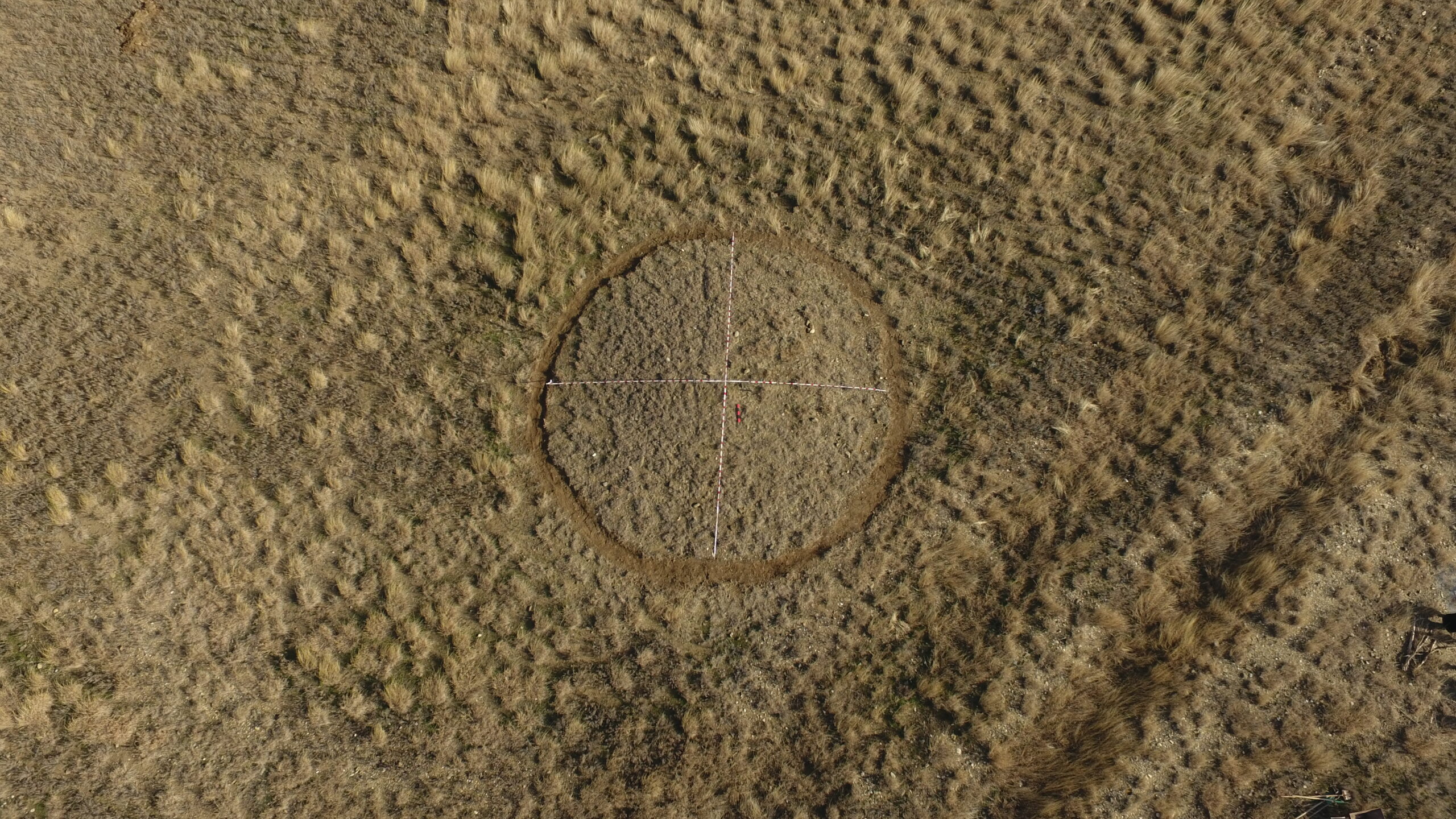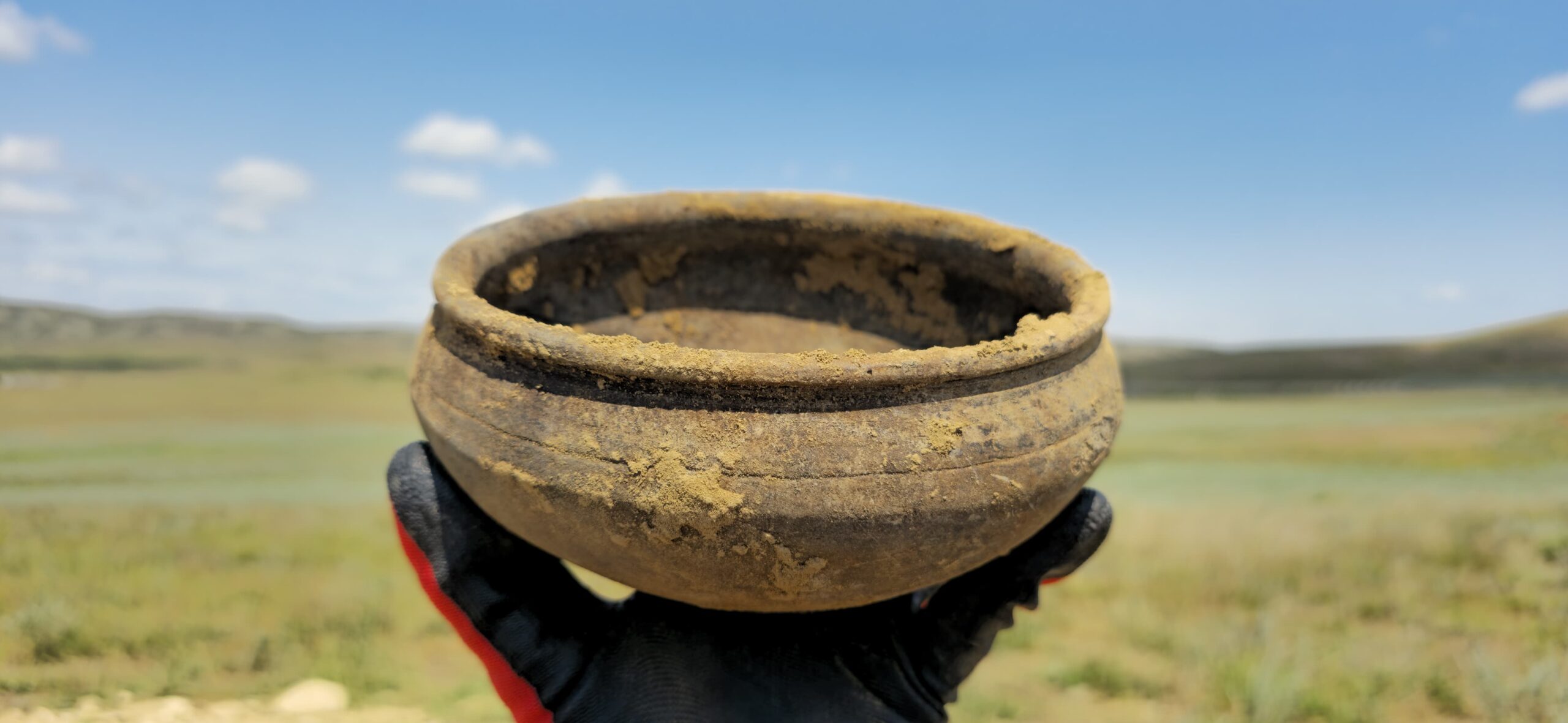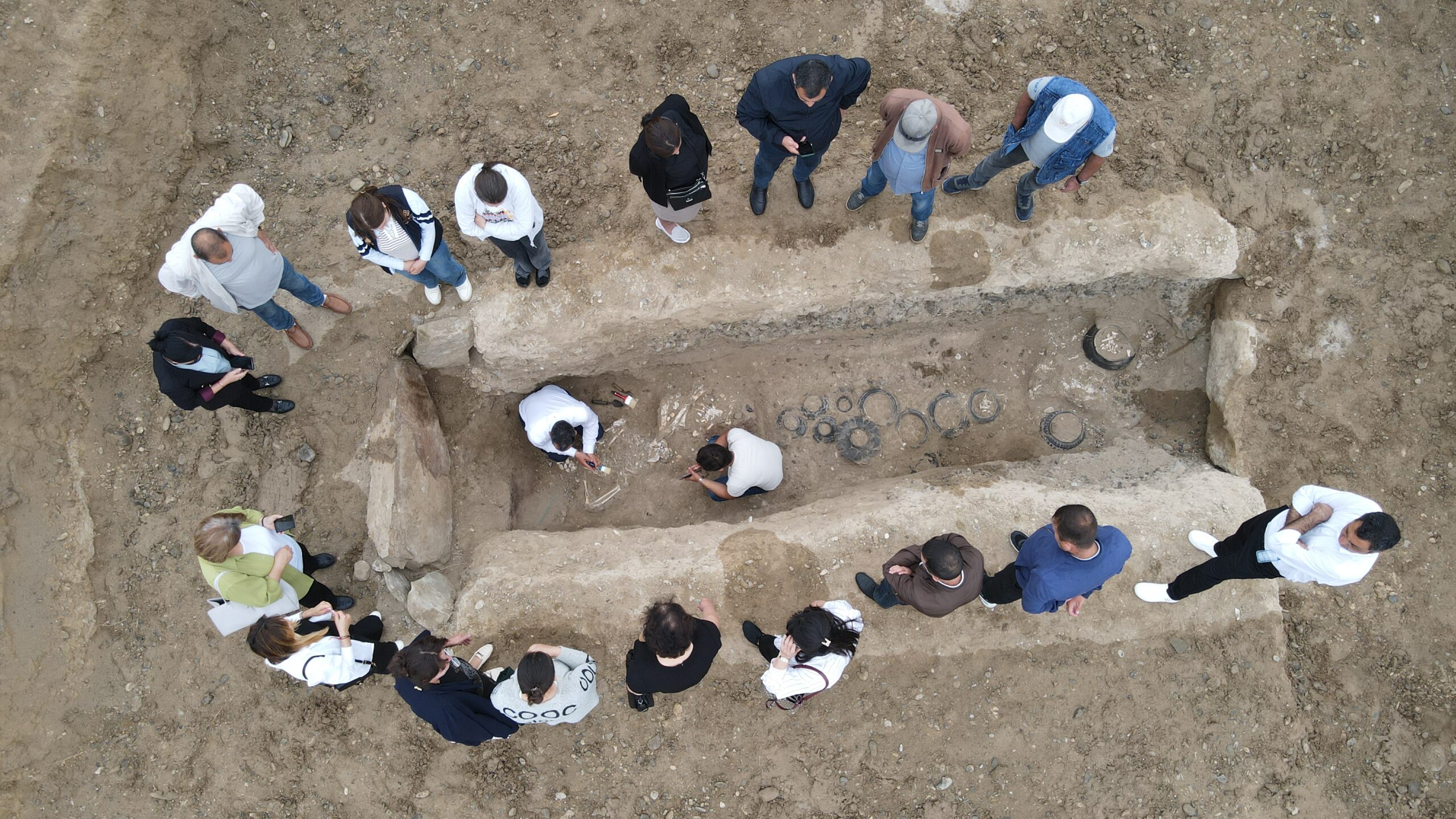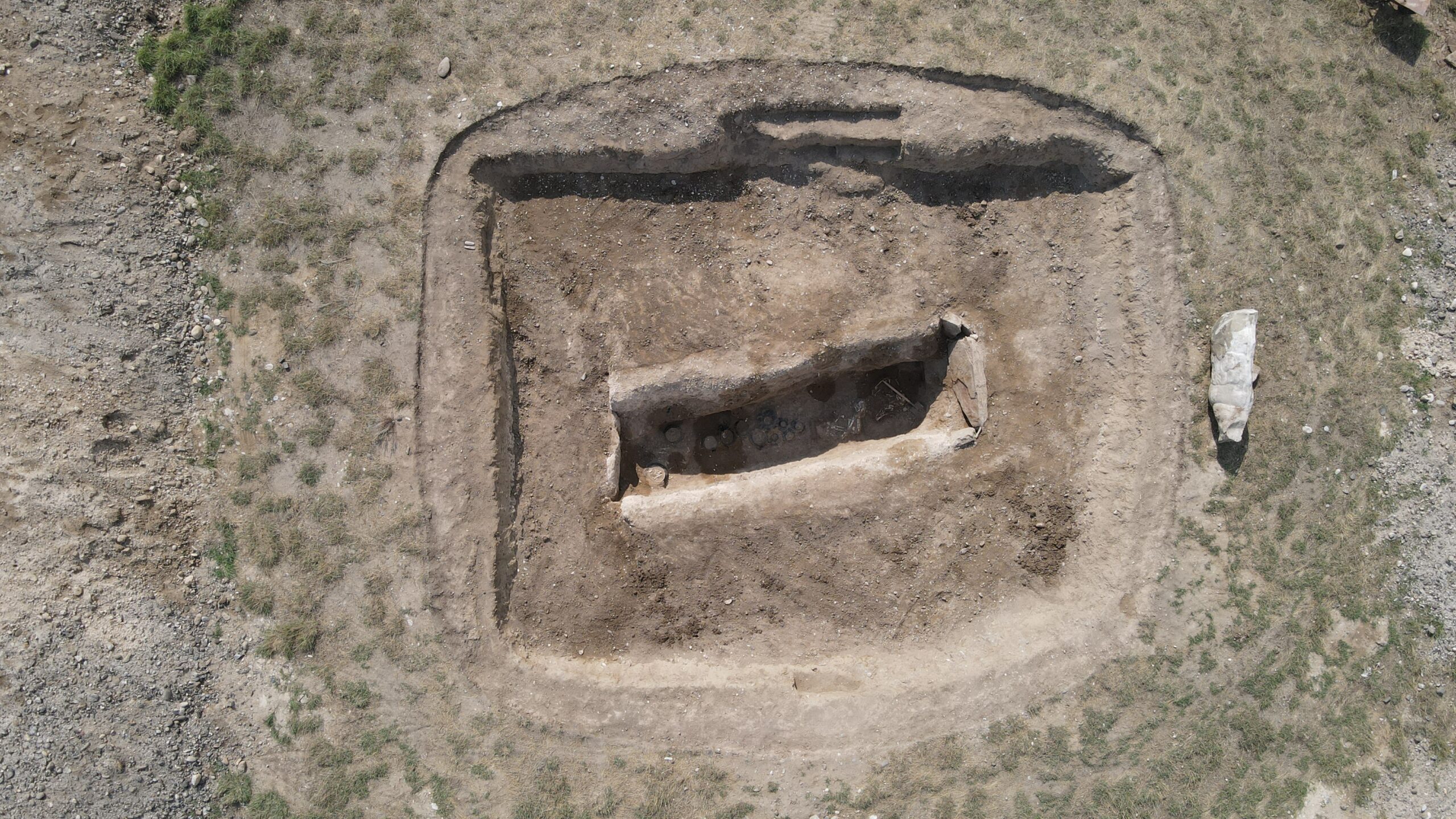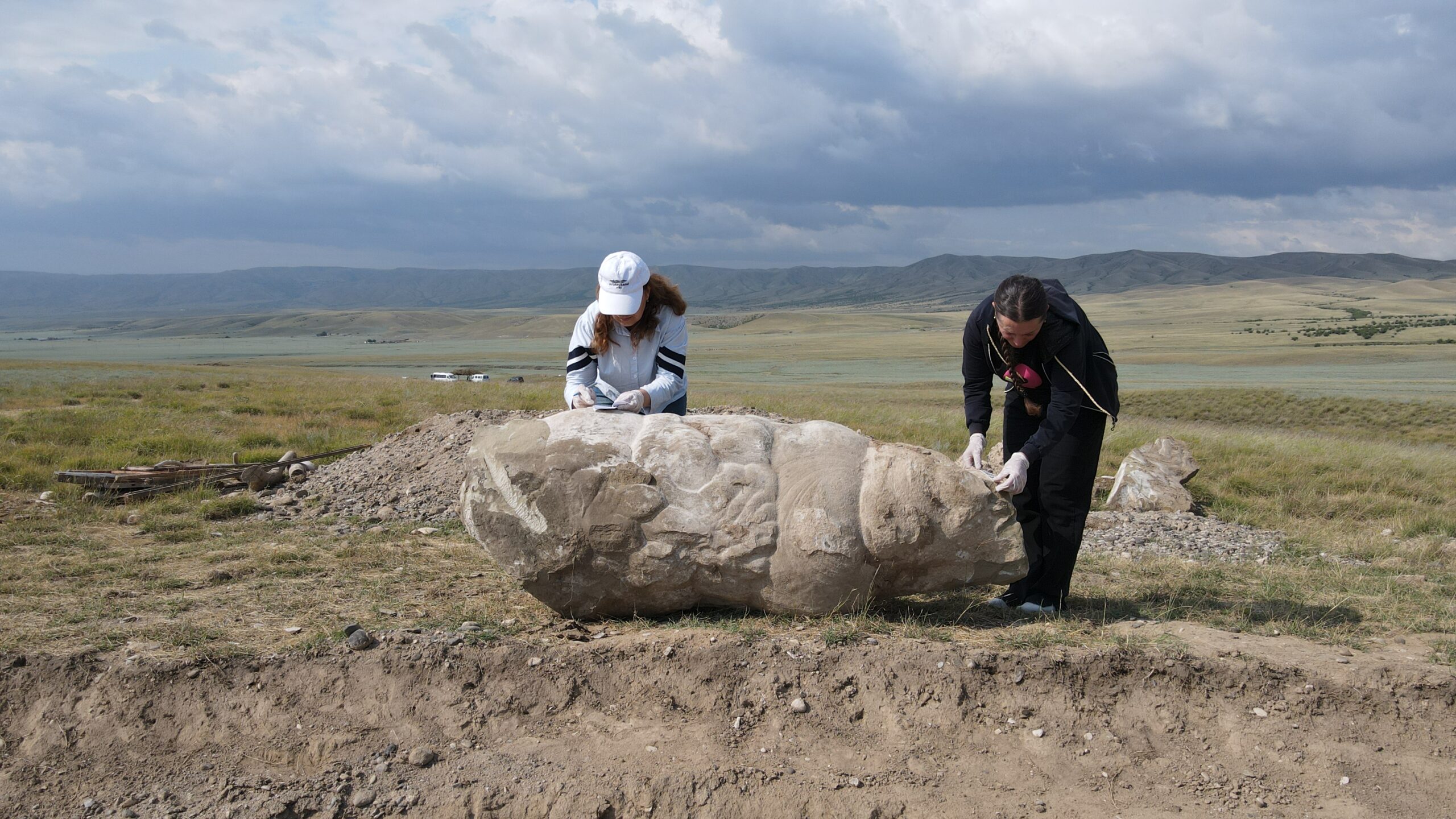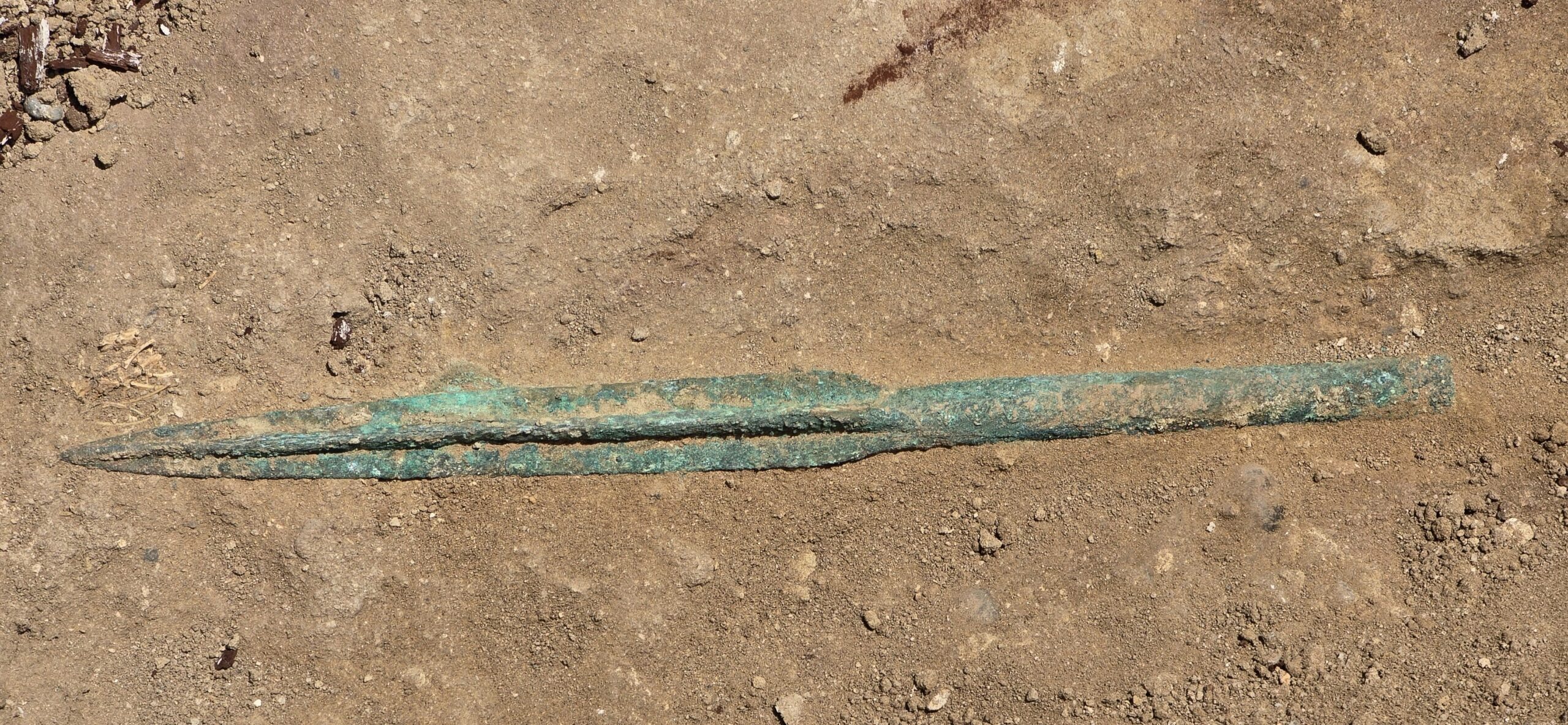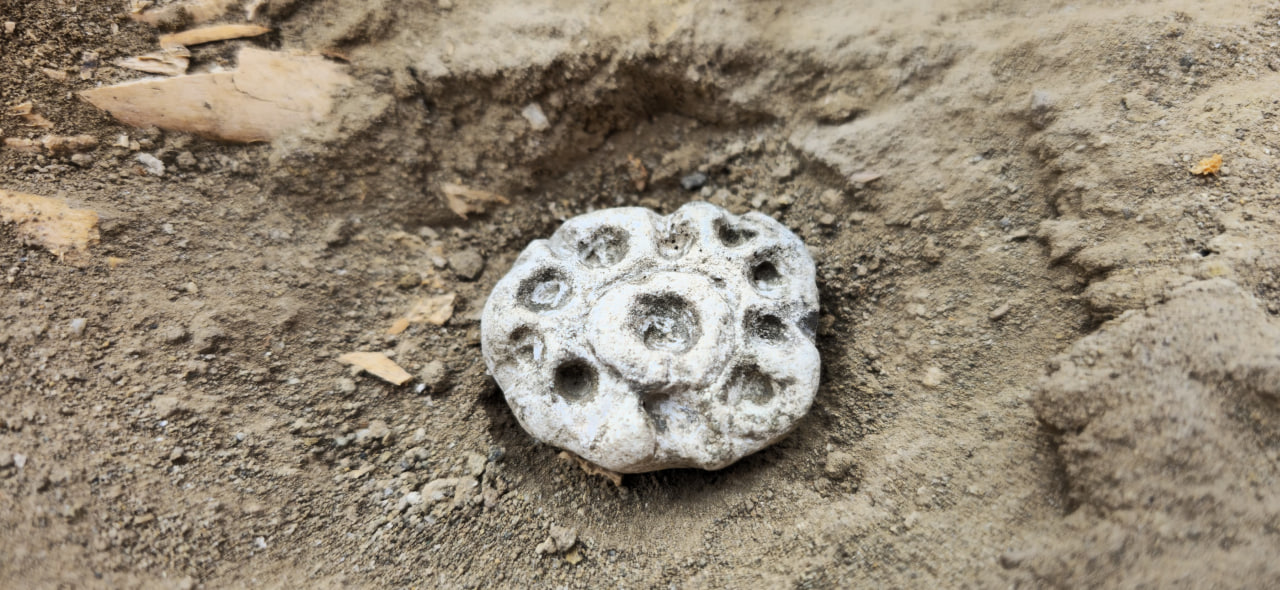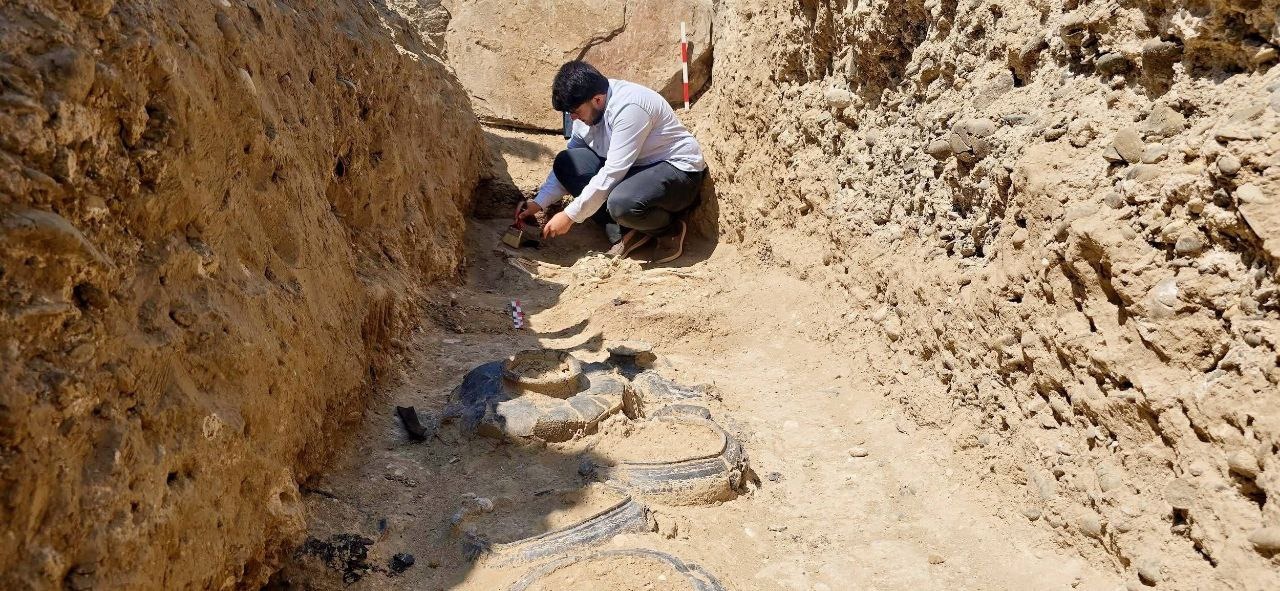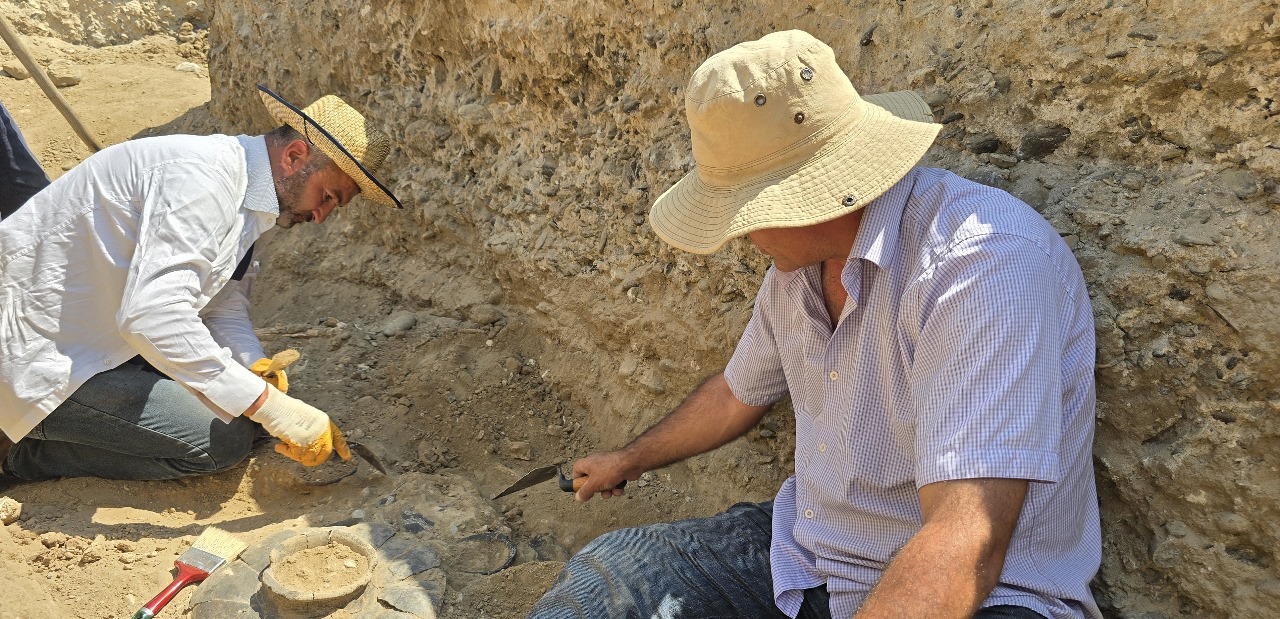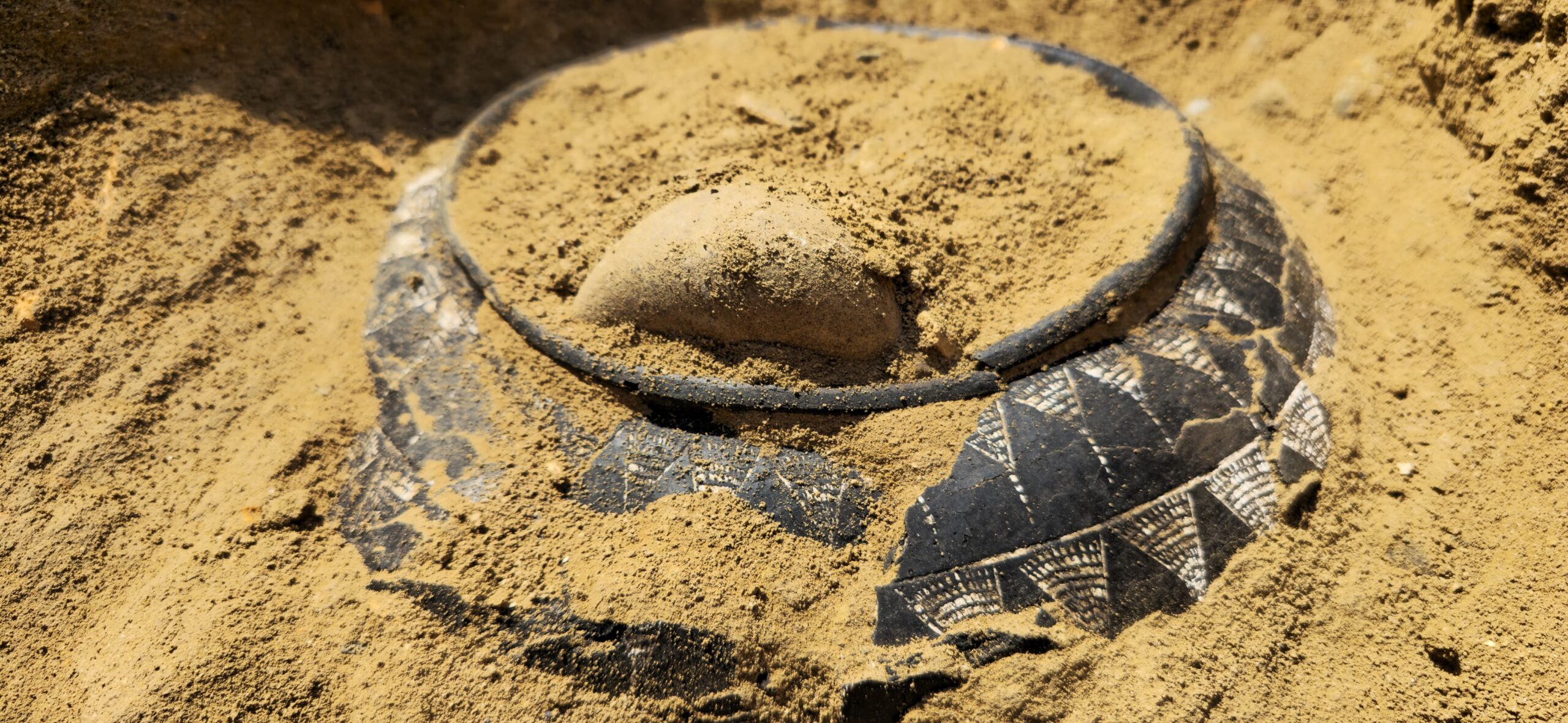Title: Yovshanlidere Kurgan No. 7
Location: Jeyranchol, Keshikchidagh Valley of Kurgans
Date of Discovery: 5–30 June 2025
Period: Middle Bronze Age
Kurgan No. 7 is located south of the previously excavated mounds, situated on a hill approximately 150 meters from the highway leading to the peak of Keshikchidagh. The kurgan has a diameter of 28 meters and a height of 2 meters above the modern ground surface. Its mound covering was composed of sandy soil mixed with gravel. Belonging to the Middle Bronze Age, this 28-meter-wide and 2-meter-high kurgan is believed to contain the burial of a chieftain, from which a wealth of artifacts was recovered.
The burial chamber, measuring 2 meters in width, 6 meters in length, and 3 meters in depth, was divided longitudinally into three compartments: one for the placement of the human skeleton and associated equipment (room), one for ceramic vessels (room), and one left entirely empty (room). This last compartment is most likely an expression of the belief in the afterlife, symbolizing a space where the soul of the deceased was thought to be nourished and find peace.
The interred chieftain, whose stature exceeded 2 meters, was placed in a semi-flexed position. Significant grave goods accompanied the burial: a four-tongued bronze spearhead clasped in his hand, a bronze ornament found near the ankle, faience beads, obsidian tools, and twelve richly decorated ceramic jars with inlaid ornamentation. Each jar was adorned with complex stamped and impressed dotted patterns on the neck and shoulder areas, with the motifs filled with a special white substance for incrustation. Inside these jars were discovered the cooked bones of animals (goat, cattle, horse, boar), interpreted as provisions for the afterlife.
These findings constitute important evidence reflecting the military technology, social organization, and funerary practices of the period. The anatomical condition of the skeleton and the positioning of the spearhead indicate that the individual held a warrior status and was likely buried with a special ritual ceremony. This type of spearhead is considered an extremely rare find, not only in Azerbaijan but also across the entire South Caucasus region.

